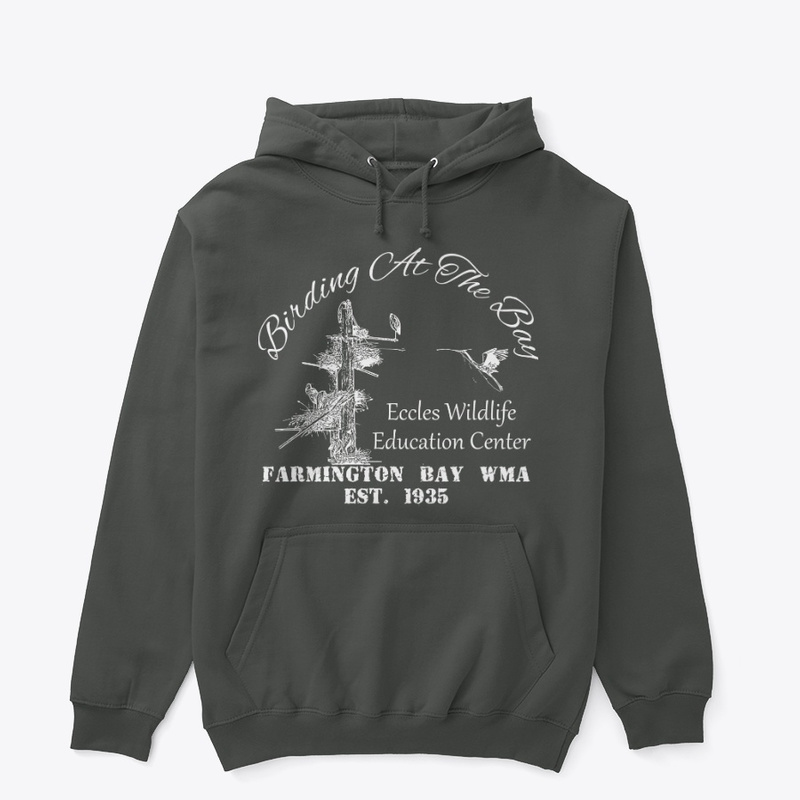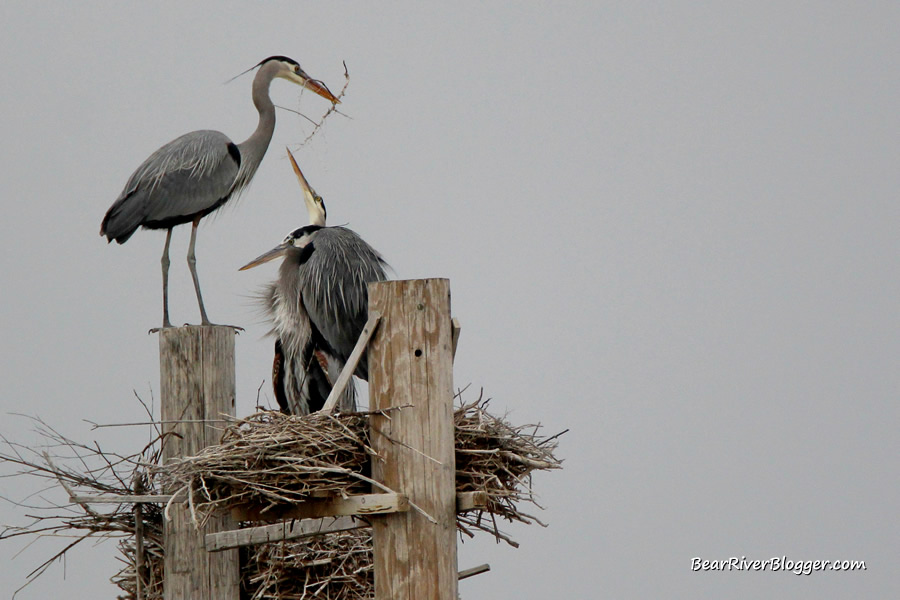When you think of likely partners in wildlife conservation, it’s not commonly thought of that a 17-year-old boy scout and a large multi-state power company would find each other let alone team up to make a very sizeable contribution regarding nesting great blue herons that could last for many years to come.
But my friends, I am happy to report that is exactly what happened at the Farmington Bay great blue heron rookery this year.
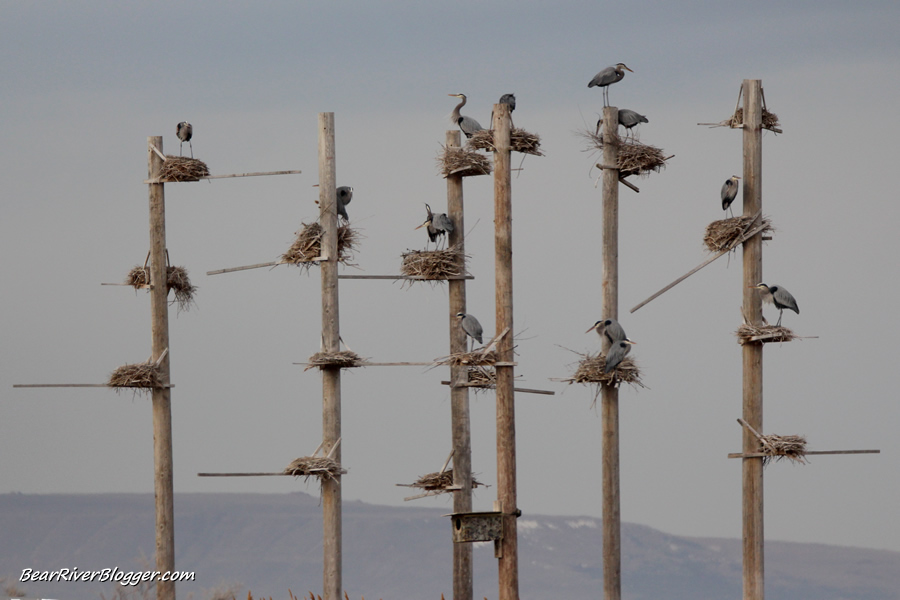
In fact, much of the work was finished over a two-day period last week with a little bit more to happen during the upcoming winter when weather conditions are more favorable, thanks to a most unconventional partnership of sorts.
Well, to be quite honest, as the story goes there are actually three major players in this wildlife conservation success story and all deserve a lot of gratitude and recognition for a job well done.
Connor Johnson
The first is Connor Johnson, a very enthusiastic young birder who is working on his eagle scout award by contributing a lot of his time, energy, and, of course, enthusiasm for bird watching to the great blue heron rookery restoration project.
Initially, Connor’s eagle scout project was working on a large pollinator garden box for the Eccles Wildlife Education Center but it was switched to the great blue heron rookery restoration project instead.
Connor took a great initiative for the heron project and secured donations for enough materials to make nine of the thirty-six platforms himself.
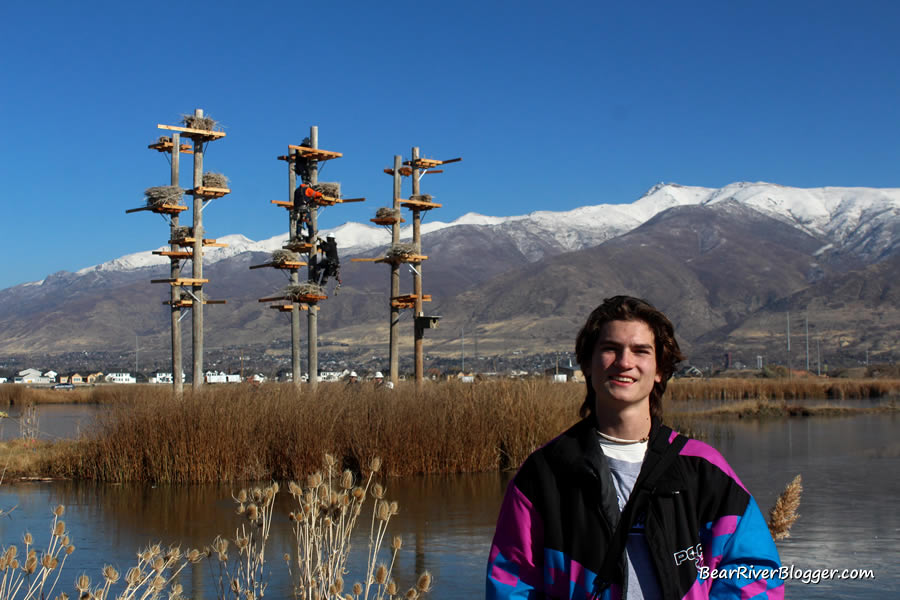
In addition to him building a fourth of the nesting platforms, Connor also helped add wire mesh to the rest as well as wooden dowels and some linseed oil to all of the new platforms being installed on the rookery.
This by itself is quite impressive and was a large part of the rookery restoration project’s success.
Connor Johnson deserves a lot of admiration and gratitude for how much his efforts and love for birds added to the great blue heron rookery project.
Rocky Mountain Power
Next is Rocky Mountain Power, supplier of electricity to Utah, Wyoming, and Idaho which provided the manpower, hardware to install the nests, and machinery to make this project come to life.
Originally, the plan was to remove and replace all the poles but when conditions didn’t allow for the large auger and bucket trucks to drive out onto the small peninsula where the rookery is situated, changes had to be implemented if it was going to take place.
This involved a more hands-on approach to not only installing the new nesting platforms but taking down the old ones while preserving the nesting material for the new nests at the same time.
Linemen from both Rocky Mountain Power and Sturgeon Electric were called upon to climb the poles and remove the old and install the new nesting platforms by hand, one nest at a time.
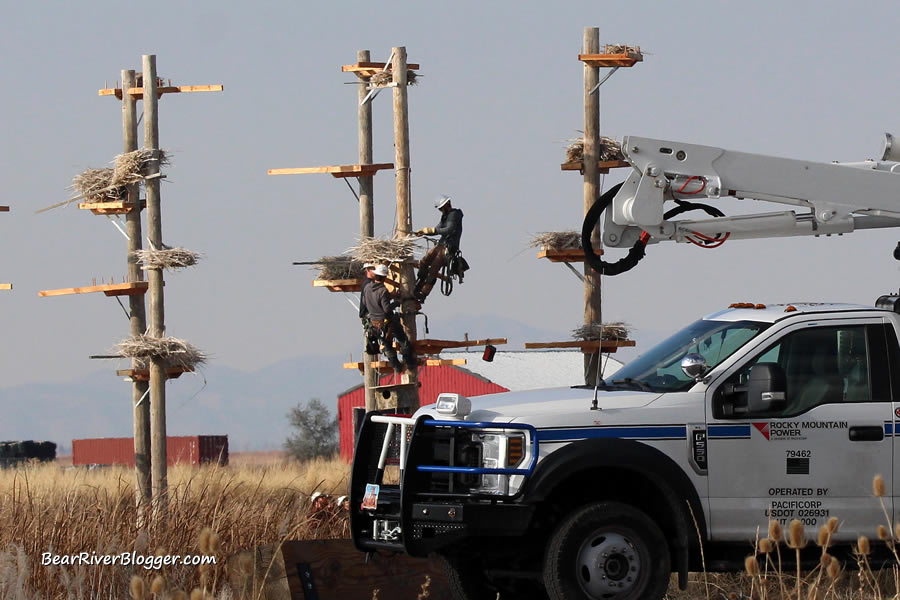
This literally took most of Friday and a couple of hours on Saturday to complete.
Rocky Mountain Power will return sometime in January when the soft, wet ground completely freezes and their auger and bucket trucks can be used to install the 3 new poles to the rookery, thus bringing the project to a successful end.
Without the help of Rocky Mountain Power, the great blue heron restoration project most likely would not have come to fruition.
In fact, Rocky Mountain Power biologists helped push for the increase in more poles and nesting platforms to hopefully keep herons from nesting on nearby power poles.
Utah Division of Wildlife Resources
And rounding out the trio is the Eccles Wildlife Education Center of the Utah Division of Wildlife Resources, the state agency that manages Farmington Bay and oversees the great blue heron rookery and who put Connor Johnson and Rocky Mountain Power together for this much-needed bird conservation project.
Simply put, without the passion, direct help, and involvement of the Eccles Wildlife Education Center (EWEC), this project would not have come to be.
Initially, the heron rookery project was spawned by the late Billy Fenimore (EWEC Manager) and was a great passion of his that he and I discussed in almost every conversation we ever had.
And after his untimely passing, continued efforts for the rookery were picked up and moved forward by Hayley Pace, interim EWEC Manager after Billy’s passing, who helped keep Billy’s dream alive by continuing to work with Rocky Mountain Power to keep the project going.
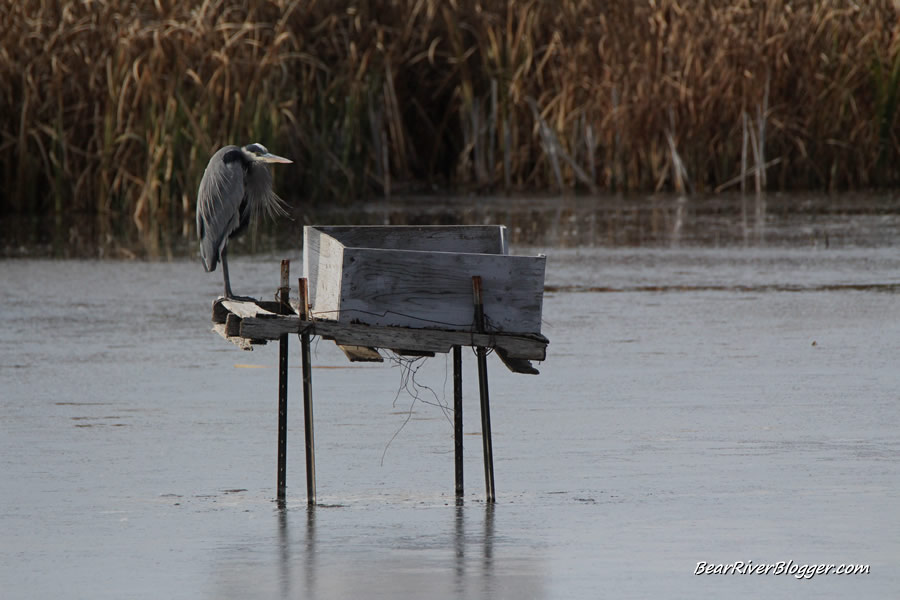
Materials needed for the remaining 27 great blue heron nesting platforms were purchased by the Eccles Wildlife Education Center and were built by DWR staff and dedicated hunters.
Farmington Bay Manager and Assistant Manager, Jason Jones and Dave England, approved the project and helped set the time frame so as to not disturb the rookery during the breeding and nesting season as well as helped Connor get started on building nests for the rookery.
All in all, from start to finish the staff and volunteers at the Eccles Wildlife Education Center and Farmington Bay itself were instrumental in the great blue heron restoration project and deserve a great amount of gratitude and appreciation for keeping Billy’s dream alive and seeing this project through.
The Great Blue Heron Rookery
Believed to be originally built in the late 1980s as an eagle scout project after the Great Salt Lake waters receded from the devastating floods of 1984, the great blue heron rookery at Farmington Bay has stood for decades as a monument for not only bird conservation but also for watchable wildlife opportunities for the general public as well.
The Farmington Bay great blue heron rookery consists of six large telephone poles standing erect in the middle of a wetland habitat, literally only a couple hundred yards from the Eccles Wildlife Education Center and parking lot.
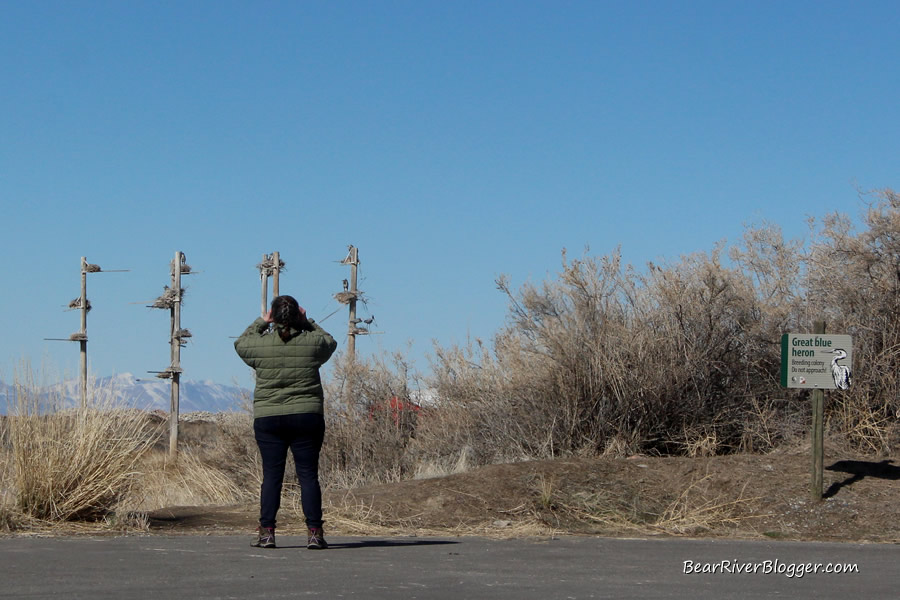
Each pole is adorned with 3 individual nesting platforms that give a safe place for local great blue herons to nest, far up and away from ground-based predators.
And because of predation, great blue herons prefer to nest high above the ground in groups, otherwise known as heron colonies.
When no such locations exist, the large herons will nest in shrubs and even on the ground if needed, thus taking a greater risk of losing their eggs or chicks to predators such as raccoons, skunks, and foxes, as a couple of examples.
Years ago, the Farmington Bay Wildlife Management Area had a more natural rookery setting with several large cottonwood trees located on the east side of the WMA but, unfortunately, after a combination of high east winds and beaver damage, the tall trees were eventually lost.
(Great Blue Heron Biology.
Don’t forget to subscribe to our Bear River Blogger YouTube channel for short nature clips, occasional live feeds, and periodic updates about the Bear River Migratory Bird Refuge and other places in nature of interest.)
This makes the artificial heron rookery that much more vital for local great blue heron populations and why it has gone through a couple of repairs over the years when the weather has taken its toll on the structure.
As of this year, several of the old nesting platforms have either fallen completely off the structure or are in very bad shape even though they are still attached to the poles.
This prompted action by the Eccles Wildlife Education Center manager at the time, the late Billy Fenimore, to start the process to repair, rebuild, and even expand the heron rookery.
Originally, it was hoped for by Billy that a second great blue heron rookery could be established on Farmington Bay but a suitable location was never settled upon.
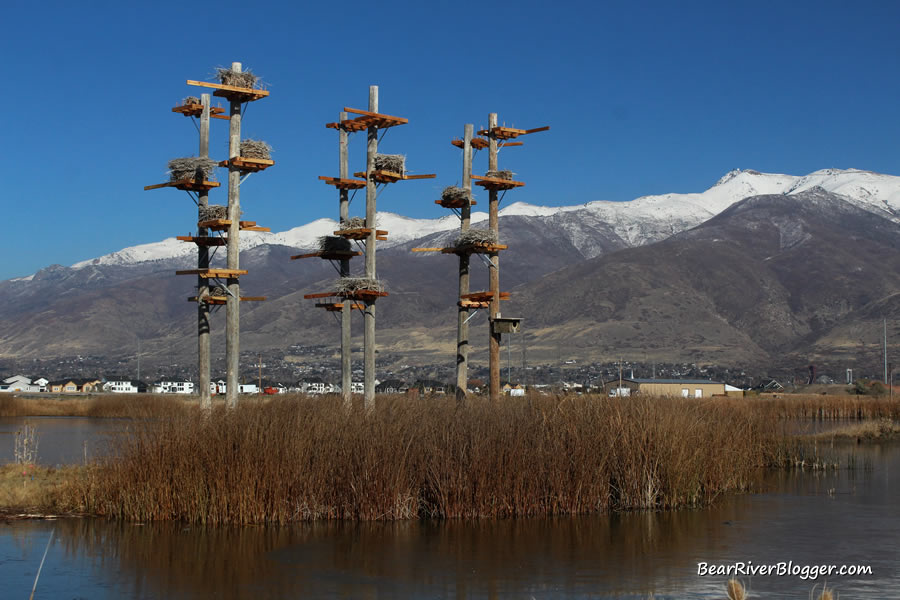
But even though the heron rookery project has changed and evolved a bit since it’s inception, once the rookery is completely finished in January, each pole will now have 4 brand new nesting platforms, essentially doubling the overall nesting capacity from 18 to 36 nesting platforms.
The three new poles will be added sometime during winter when the ground is frozen enough to drive the large auger truck out to the rookery site to dig the necessary holes.
It is believed the new poles and nesting platforms will not only give more bird-watching opportunities to the public for nesting herons but also might keep great blue herons from trying to nest on nearby transmission line poles, something that was noticed this past summer on the large metal poles east of Farmington Bay.
In fact, it was pointed out to me by Rocky Mountain Power that one of the large power poles has four great blue heron nests still on it from this past summer, and such nests can cause problems so they will have to be removed.
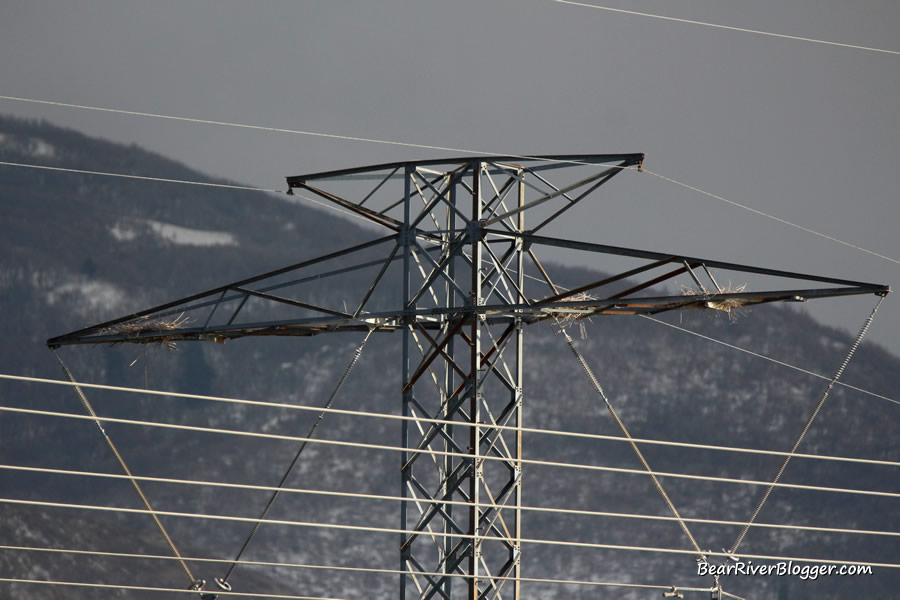
So after all is said and done, the great blue heron rookery at Farmington Bay will continue to stand for years to come as a cooperative effort between several entities for both bird conservation and public enjoyment.
If you have never been to the great blue heron rookery at Farmington Bay, it is well worth the time to visit during spring and early summer when the herons are busy building nests and rearing their young.
If you are an avid bird watcher and nature enthusiast like I am, I offer you to head on over to our subscribe page and sign up for email notifications for future blog posts like this.
“Birding At The Bay” Bird-Watching Apparel
Show off your love for bird watching at the Farmington Bay Eccles Wildlife Education Center as well as support our website and YouTube channel with this unique line of “Birding At The Bay” line of t-shirts and hooded sweatshirts, currently available in both t-shirts and hooded sweatshirts in a variety of sizes and colors.
